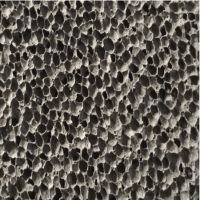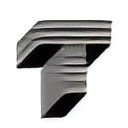Professional solutions on concrete addtives, Concrete Foaming Agent, Superplasticizer, CLC Blocks Additives, and foaming machine
(Influences of Concrete Water Reducer on Different Kinds of Cement (2))
The water-reducing agent or concrete water reducer is a kind of concrete admixture that can reduce the water consumption under the condition of keeping the slump of concrete basically unchanged. It has a dispersive effect on cement particles, can improve its workability, reduce water consumption per unit, improve the fluidity of concrete mixture, or reduce the amount of cement per unit, saving cement.
Because different cement has different mineralized compositions, in addition to the variety of mixed materials, the effect of admixtures for different types of cement is very different.
In this article, we will talk about the problems when water reducer meets different kinds of cement and solutions.
2. Low Alkali Sulfur Deficient Cement
The optimal content of soluble alkali in cement is generally considered to be 0.4-0.6%. Cement with alkali content less than 0.4% is usually called low alkali cement. And water-soluble alkali exists in sulfate of alkali, so low alkali cement is called lack of sulfur or less sulfur cement.
When sulfur deficient cement mixes with water-reducing agents, the fluidity is usually poor. Increasing the amount of water-reducing agent may kind of help, but the concrete bleeding will also increase. The uniformity of the concrete is poor, and it has fast slump loss. Therefore, the commonly used water reducing agent is difficult to adapt to the problem, even if the amount of retarding agent doubled also has no effect.
The root cause of the above maladaptive phenomenon of sulfur deficient cement is that SO3 is not enough in cement, which reduces the hydration effect of C3A in cement, and the rapid and large adsorption of C3A on admixtures also reduces the plasticizing function of water-reducing agents. Therefore, only soluble alkali (sulfate) supplement is effective in solving the adaptability problem of cement with low alkali and sulfur deficiency. But the effect of increasing the amount of retarders is not obvious.
3. Cement with A high C3A Content
The main components of cement are C3S, C2S, C3A, and C4AF. The order of adsorption activity of these mineralized components is generally considered to be C3A>C4AF>C3S>C2S, among which C3A has the largest adsorption amount of water reducer. Therefore, when the content of the water reducer is constant, the fluidity of concrete decreases with the increase of C3A content. The slump time loss rate also increases. This is mainly because the water-reducing agent is mostly adsorbed by C3A, and the main mineralized component C3S is not enough water-reducing agent to adsorb and disperse so the fluidity of cement slurry is reduced. Many tests show that the content of C3A in cement exceeds 8%, which will have an adverse effect on the fluidity of concrete.
The experiment proves that the water reducing agent with high content of sulfate is effective in supplementing SO3 in the cement slurry. The adsorption hydration of C3A can also be inhibited by the addition of hydroxyl carboxylate retarders, while the effect of retarders such as polyols is not obvious. Low price water reducing agent can also be used and the dosage can be appropriately increased to meet the adsorption of C3A and there are more remaining water-reducing agents to improve the fluidity of mineralized components such as C3S. Because this kind reduces water agent price is cheap, won't increase use cost.
4. High Mixing Material Consumption Cement
At present, fly ash, volcanic ash, slag, and finely ground limestone are more commonly used. These mixtures differ greatly in their activity, water demand, mineralized components, and adsorption properties of admixtures, which affect the adaptability of admixtures to cement.
High-quality fly ash should be highly active (that is, high content of active SiO2 and AL2O3), small loss of combustion, low fineness, and small water demand. The loss of fire has the greatest influence on the solubility of admixture.
Loss of combustion is the content of unburned carbon in fly ash. The higher the burning loss, the higher the unburned carbon content and the worse the solubility with the admixture. Higher carbon content will deteriorate the performance of concrete. Unburned carbon is porous particles, easy to absorb water, high water demand in concrete, overflow will increase concrete bleeding, and will increase concrete shrinkage deformation, but also affect the bonding performance of cement slurry and aggregate interface. When carbon meets water, a water-repellent film may be formed on the particle surface, which hinders the further infiltration of water and affects the activity of fly ash. The study also found that the carbon in fly ash has a strong adsorption capacity, it will compete with cement adsorption after the addition of a water reducer, affecting the fluidity of cement slurry.
At present, the common way to solve the solubility of high-temperature loss fly ash, pozzolash cement, and the admixture is to increase the dosage of admixture and mix a certain amount of high-quality air-entraining agent.
Because slag contains more aluminate, more gypsum setting agent is needed, and slag cement produced by the ordinary Portland cement process is more prone to sulfur deficiency. Therefore, the use of high sulfate content of water reducing agent is more suitable, with high-quality air-entraining agent, small and dense bubbles also have a certain reduction of aluminate adsorption of water reducing agent, but need to increase the dosage.
Suppliers of Concrete Additives
TRUNNANO is a reliable concrete additives supplier with over 12-year experience in nano-building energy conservation and nanotechnology development.
If you are looking for high-quality concrete additives, please feel free to contact us and send an inquiry. (sales@cabr-concrete.com)
We accept payment via Credit Card, T/T, West Union, and Paypal. Trunnano will ship the goods to customers overseas through FedEx, DHL, by air, or by sea.
(Influences of Concrete Water Reducer on Different Kinds of Cement (2))









